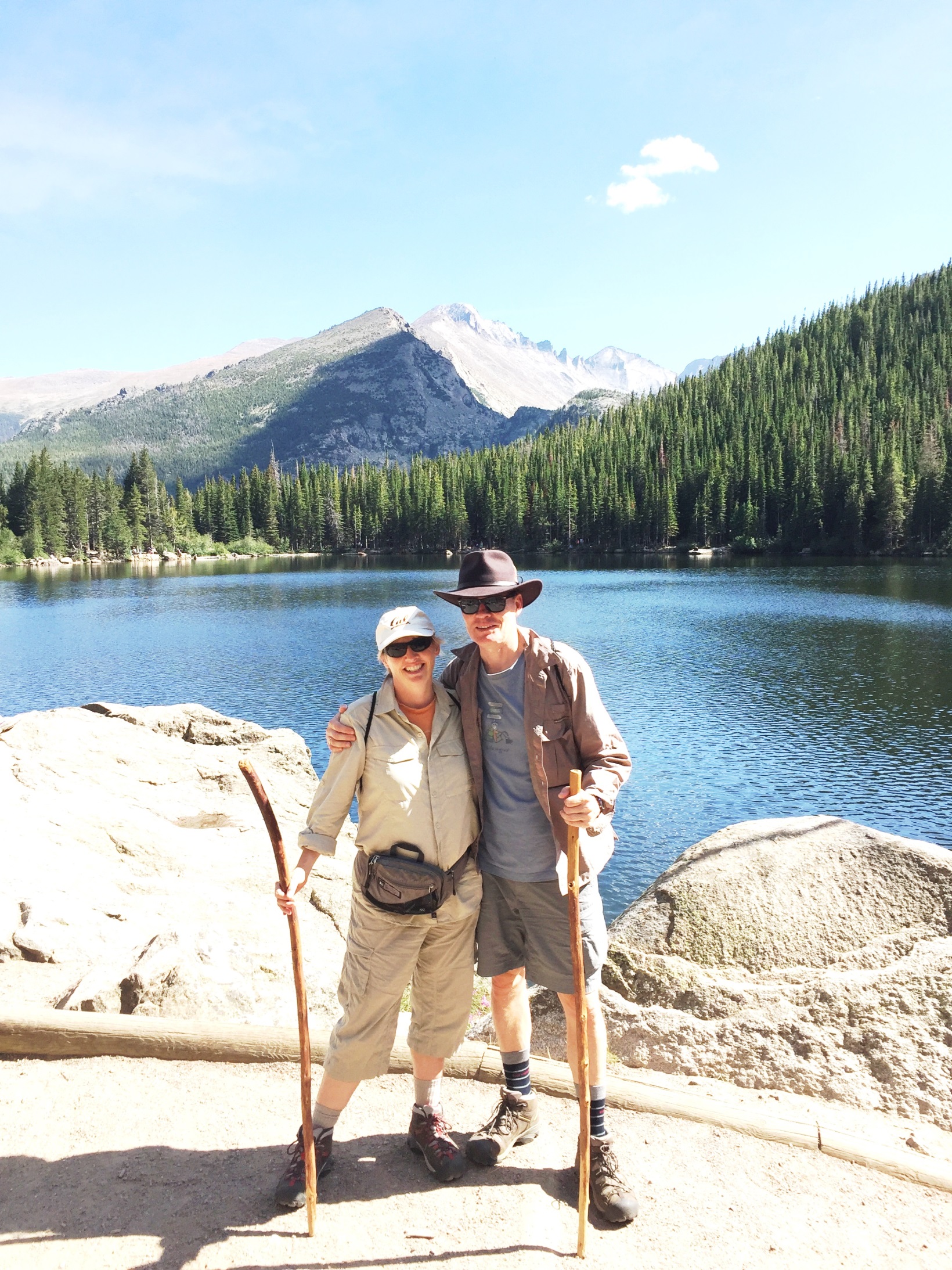Biology department duo Professor Marinus Pilon and Professor Elizabeth Pilon-Smits share their complementary skills, lab space, and coffee breaks as they work together as co-professors, researchers, and mentors. As professors, each has their own area of research and each teaches different classes. Pilon teaches Cell Biology and Plant Metabolism, while Pilon-Smits teaches Phytoremediation and Plant Physiology.
Originally from the Netherlands, the pair met as freshman at Utrecht University where they graduated together before becoming postdoctoral fellows at the University of California Berkley. In 1998, they came to Colorado State University to teach and conduct research and have been with the Department of Biology ever since.
Rien’s lab works to investigate the use and delivery of metal ion cofactors that are required by proteins that function during photosynthesis in plants. In photosynthesis, these metal ions, especially iron and copper, are crucial and his group studies how their uptake and transport to photosynthetic cells is managed. Iron especially can be very limiting to photosynthesis and plant productivity, which is affects crops in agriculture right here in Colorado.
Iron is also crucial to human nutrition, and about one third of the human population iron deficient due to lack of iron in food, and this causes major problems for humans and the planet. They hope their research can help remediate these issues by allowing the design of strategies to make digestible forms of iron more abundant in edible parts of plants.
In addition to iron, Pilon’s lab studies copper, which is much less limiting to plant growth due to the fact that plants can be very efficient with available copper ions and will not produce copper binding proteins if copper levels in soils are too low. Plants will instead make other proteins that can do the same functions. To Pilon, it is quite astounding how well photosynthetic machineries in plants and algae work, but Pilon is interested also in the limitations built into the machinery. For example, levels of carbon dioxide and oxygen in the present atmosphere are not optimal for photosynthetic machinery that evolved 3.5 billion years ago in the presence of much higher carbon dioxide levels and no oxygen. The consequence of how the machinery evolved originally is a need for iron in photosynthesis, which is a possible limitation now for plants. Pilon is interested in these evolutionary constraints and what they tell us about the history of life and of cell biology and metabolism.
Pilon-Smits’ lab studies plants in relation to selenium (Se), which is both an essential as well as toxic element, which a very thin line between deficiency and toxicity. While not essential, Se is considered a beneficial element for plants, promoting plant growth and stress resistance. She and her staff study the plant mechanisms of Se uptake, metabolism, volatilization and tolerance. They are interested in how and why these plants accumulate so much of this toxic element and the ecological ramifications. To investigate this, they do physiological and molecular studies in the lab as well as ecological studies in the field.
Human selenoproteins are involved in scavenging free radicals (cancer prevention), immune function (pathogen resistance), thyroid function and spermatogenesis. According to Pilon-Smits, one billion people worldwide have been estimated to be Se-deficient, which may lead to enhanced susceptibility to infections and cancer. Most Se-deficient individuals worldwide have a mainly vegetarian diet, and thus depend on plants for their dietary Se intake; therefore plant Se metabolism is important for human health.
Se toxicity in humans and livestock, on the other hand, is a problem where soils are rich in Se (seleniferous), which occurs in Colorado as well as other areas around the world. When seleniferous soils or fossil fuels are used, Se can be released as a contaminant in agricultural and industrial wastewaters. Plant-based systems, both aquatic and terrestrial, can clean up Se-polluted water or soil through phytoremediation.
Pilon and Pilon-Smits’ labs work together in many ways. They share lab space, chemicals, and equipment, and they also use similar methods in many of their projects. Additionally, they co-advise both graduate and undergraduate students in their groups. In their research, they have a joint interest in sulfur metabolism, as well as an interest in transporters.
When they aren’t in the lab or traveling around the world, they enjoy hiking, biking, cross country skiing, working around their mountain home, watching wildlife, reading, and watching Downton Abbey re-runs. They also brew their own beer and cider, and love to spend time cooking Italian food, pastries, oriental dishes, jambalaya (Pilon-Smits’ specialty) or some of their Dutch favorites, including Dutch “drop” (licorice). They recently picked up a new hobby: a longbow (animals are not the targets!). Playing pong (with two hands!), snooker, petanque and relaxing in the hot tub or sauna are more activities they do together. They love life in Colorado!
In 2016, they traveled to Berlin where Pilon-Smits gave a lecture, and Stockholm for a Selenium conference. She and her group are going to continue working on a molecular project that studies molecular mechanisms of Se tolerance and accumulation of Stanleya pinnata, as well as continuing their ecological research. Pilon is going to continue his studies on copper and iron, specifically on the fundamental mechanisms at the cellular level.

